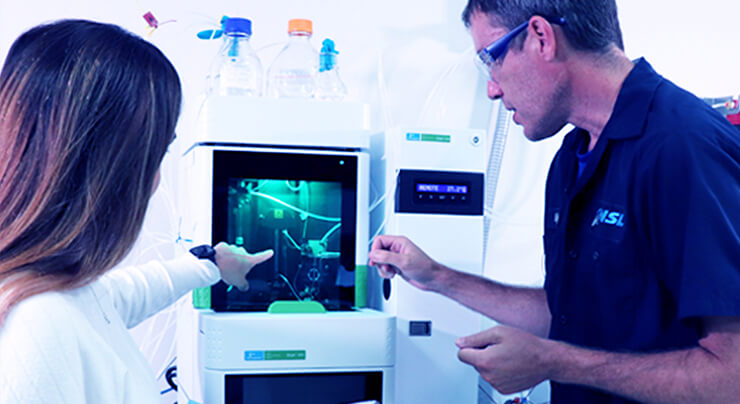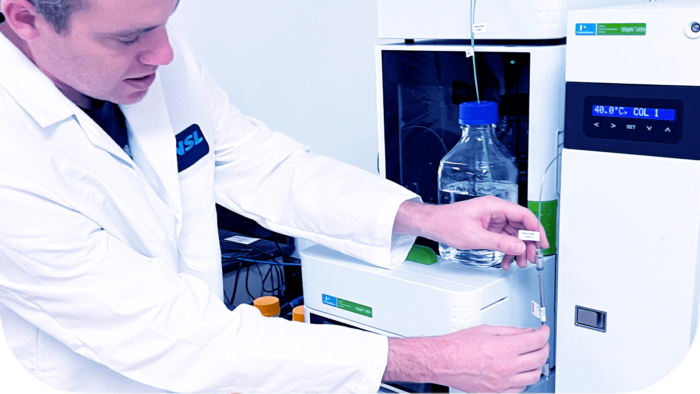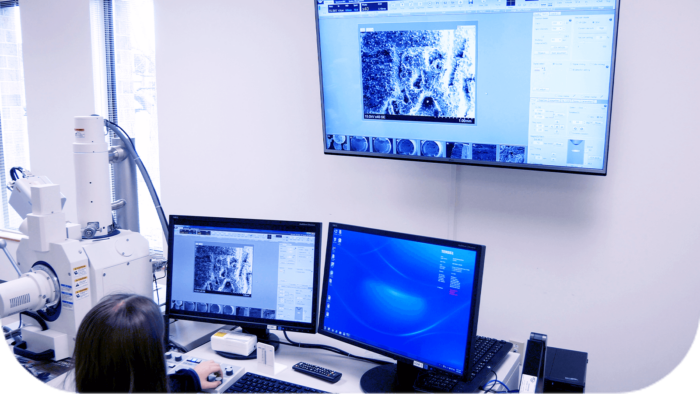State-of-the-Art Powder Evaluation
NSL Analytical’s metal and ceramic powder characterization involves testing for physical characteristics such as microhardness testing, particle size and shape as well as chemical composition. Our team of scientists have extensive knowledge of handling, sampling and analyzing powder to provide accurate, repeatable results.


NSL tests materials and products for chemical composition, components and impurities. We can analyze a wide range of products and samples, with detection down to trace levels.
The chemical composition tests we offer include:
Chromatography
Inductively Coupled Plasma
Wet Chemistry
Mass Spectrometry
Spectroscopy

Our chemical composition tests include:
Laser diffraction is the most widely used technique for particle size analysis. The methods have developed considerably over the years as had the capability to analyze over broad size range in a variety of dispersion media. Manufacturers and end users of powdered materials depend upon these accurate, reproducible, high resolution light scattering measurements to ensure full characterization of the particle size distribution of their sample.
NSL offers this particle size characterization analysis with the recent launch of our laser diffraction methods using the Malvern Mastersizer 3000. Laser diffraction is a well-established industry standard technique, defined by ISO 13320.
A large variety of material types can be analyzed including:
Applications include measuring the particle size distribution of pigments and materials used in the following:

Our solution offers the following benefits:
NSL provides metallurgical evaluations, SEM analysis testing services, & microstructure analysis. Contact us to learn more or request a quote.
NSL Analytical’s state-of-the-art Scanning Electron Microscopy Lab provides high magnification-high resolution imaging of samples at magnifications from 15-50,000X. Our large sample chamber can accommodate samples up to approximately six inches in length by three inches wide.
Remotely access material evaluations in real-time from your computer to watch, assist, or even drive the SEM. With this exciting technology, you can feel like you are in our lab during SEM analysis, from the comfort of your own office.
An Energy Dispersive Spectrometer (EDS) system attached to the SEM allows NSL Analytical to provide semi-quantitative microanalysis of discrete areas on a sample. Our microscopy capabilities include:
